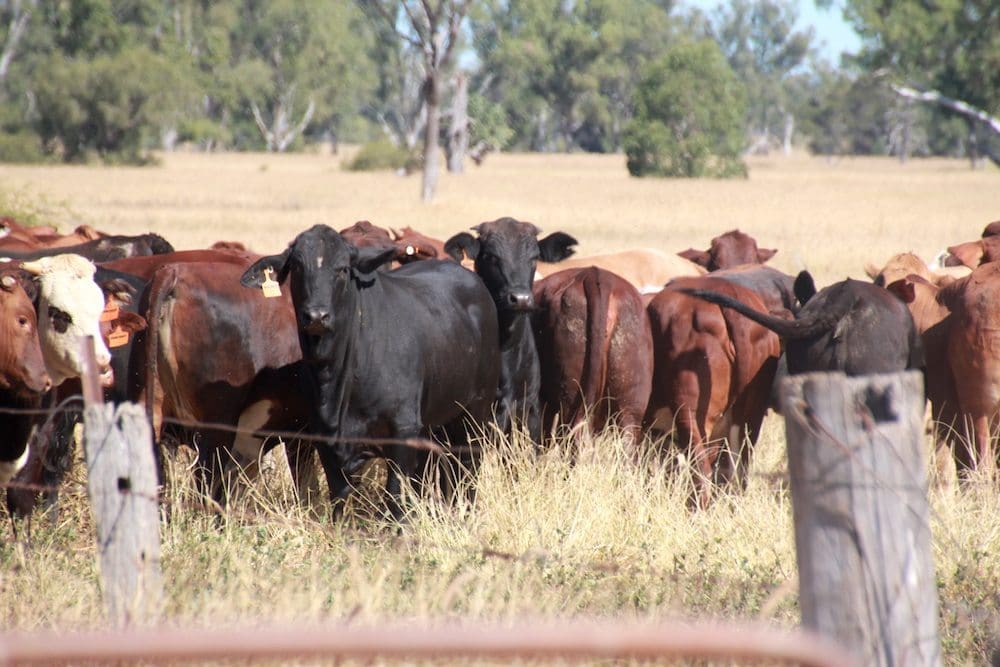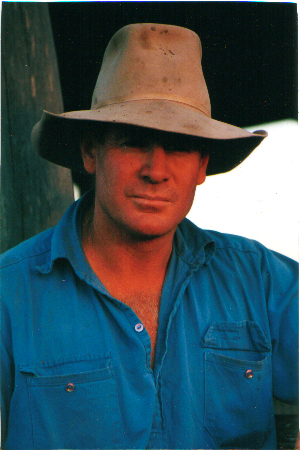If people are left or right-handed, are cattle left or right hoofed?
And if they are, would it have any implications for cattle handling or yard design?
A recent article on The Conversation posed the question of whether cats and dogs can be left or right pawed, offering some interesting insights into ‘laterality’ – the innate behaviour in animals to use one side of the body more than the other.
When a reader asked us if laterality existed in cattle, we had to admit it wasn’t a topic we had previously considered, but once asked, we felt be-hooved to explore further.
In short the answers appear to be ‘possibly’ and ‘not really’.
That is, while it is possible, perhaps even probable that individual cattle may be left or right hooved – or ‘nearside’ or ‘farside’ dominant to be more faithful to industry vernacular – trying to account or compensate for this in handling practices may only unnecessarily complicate matters.
There have been many competing theories to explain the phenomenon of laterality, but why some people and some animals favour one hand/side over the other remains largely a mystery.
In humans, left handed people make up about 10 percent of the population.
As James Cook University’s Dr Janice Lloyd and Richard Squires wrote in The Conversation, there is some evidence to suggest dogs and cats can also be right- or left-pawed.
(To test your own dog or cat’s laterality, experiment for yourself: Which paw does your cat or dog lead with when reaching for an object, or when holding something with a paw to eat, or to tap open a pet door?)
Some insights they offered into laterality in the animal world included:
- Dogs wag their tails to the right when they see something they want to approach, and to the left when confronted with something they would rather avoid. This suggests, as with people, that the right and left halves of the brain do different jobs in controlling emotions.
- Animal behavioural specialist Dean Anderson from New Mexico University in a 2002 Farming Ahead article said about 70pc of sheep are right handed, which helped to explain why some sheep were difficult to move through a set of yards, as 30pc are more naturally inclined to move the other way.
- Horses seem to prefer to circle in one direction rather than the other. Farriers speak of one side of horses being dominant – ie if the front left leg was stronger than the front right leg a clockwise race track would be more suitable.
- Kangaroos are almost exclusively lefties. The neural basis for this is unknown.
- Many animals also use their left eye and left ear (indicating right brain activation) more often than the right ones when investigating objects that are potentially frightening. The reasons for this are also not well understood.
- Animals, including humans, with a clockwise hair whorl tend to be less stress-prone than those with anti-clockwise hair growth. The position of the hair whorl also matters; cattle and horses with hair whorls directly above the eyes are more typically difficult to handle than those with whorls lower down on the face.
- Left or right bias can also be related to temperament. Some studies have suggested left-handed people might be more vulnerable to stress, as are left-pawed dogs and other animals.
- A possible advantage of lateralisation might be resistance to disease – hand preference in animals is associated with differences in immune function, with right-handed animals mounting a better immune response.
Implications for yard design, stock handling?
One of Australia’s most experienced cattle yard designers, Proway’s Bill Thomas, said laterality in cattle and how it may affect yard design was not a topic that had generated a lot of attention.
Little study has been done to show what percentages of livestock naturally favour the near or far side.
Bill said cattle yards were predominantly designed so cattle will move in anti-clockwise direction, as most people are used to working with the near side of the animal facing them coming down a single file race.
“Some northern clients are more likely to request the other side which may have something more to do with what side they brand on,” he said.
Sheep yards could go either way and were more likely to be determined by the lay of the land and the level of dexterity the operator for certain tasks i.e. whether they prefer to draft with their left of right hand or drench on a particular side of the handling race.
“As for designing left and right stock yards, I’m not sure there is any real need unless we knew that the animals were all left or all right, and even then, would it matter if they are only walking or trotting?”
Jim Lindsay is one of Australia’s leading authorities on low stress stock handling and has done a lot of working dog training.
When asked about cattle laterality, he said it was not something he chose to study or pay attention too, simply because it was hard to see how this knowledge would help.
“In the work we do I choose not to study that part of things, because I don’t see it making a difference,” he explained.
“I have done lot with working dogs, and found most dogs will be slightly left or right hand sided -not necessarily with the right or left hand paw, but they will have sides that they favour.
“What we find is that when you are training animals and you pay attention to that to you seem to make it worse.
“So in all of our teachings we tell people, don’t get concerned with it.”
Mr Lindsay felt it was the same with cattle: focusing on left or right handedness was only likely to turn it into an issue.
“As for yard design, the minute that we start to look at those things to make corrective measures towards it, we run into more trouble. Correct handling seems to take care of most things.”
“I am not saying whether cattle are likely to be left or right handed, but in the work that we do, we would say don’t focus on it, handle animals correctly and it won’t be an issue, don’t worry about it.”



In a housed dairy I noted that some cows consistently lay down with their near side legs under them more (facing toward their offside) and others consistently had their offside legs under them more (facing toward their nearside). I did some research but couldn’t find much about this topic, other than the claim that all polar bears are lefties! I figured they would be very hard to milk and left it at that.
Hello All,
With Sheep yard design, if you are preg testing ewes, then depending on whether you preg test with a right hand or left hand, (or what the contractor does) and where this is done in the yards will depend on whether a clockwise or anti-clockwise flow is preferable.
I don’t think left or right footed makes any difference in how livestock flow or are handled
Cattle prefer to run in anti Clockwise direction suggesting they lead with their near side or left leg